The garage door on your home is not something you might think much about so long as it is working. The only time you truly notice the door and all its parts and components is when something goes wrong. This is when you call a garage door repair technician to have them come fix your door.
It is not uncommon for many people to be unfamiliar with garage door terminology. Before we discuss some of the more common garage door problems you can experience, let’s do a review of garage door basics. This will help you have a better understanding of what can go wrong.
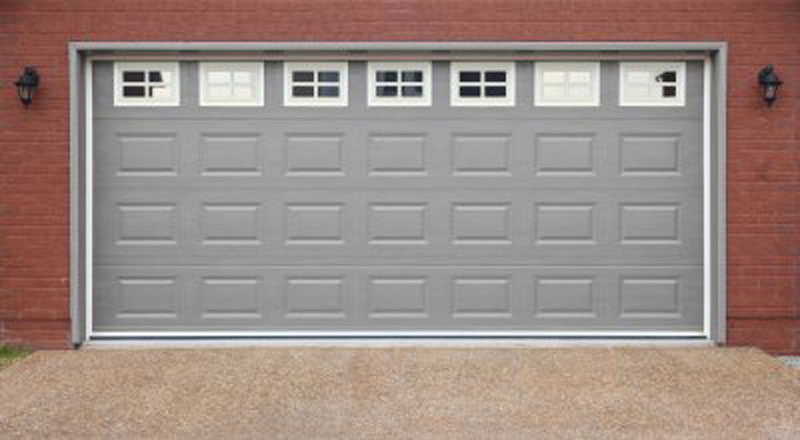
Garage Door Basics
There are several working parts and components which make up the entire garage door system. These can be broken down into three specific categories: the door itself, hardware components, and weather-stripping.
Doors
There is some general information you need to know in regards to the door itself, which can affect how it functions.
- Garage doors can open either vertically (up and down) or horizontally (left and right).
- Garage doors can be insulated or uninsulated.
- Insulated doors are ideal for the warmer Florida climates, as well as in colder northern climates.
- Insulated doors have an R-value, which tells you how effective they are at insulating your garage.
- Doors with higher R-values have more insulation to keep out the hot and cold.
- Certain types of doors are better at standing up to tropical storms and hurricanes.
- Garage doors can be made from aluminum, vinyl, wood, steel, fiberglass, and PVC materials.
- Some styles of doors will feature windows as part of their design.
- The most common types of door used on homes in Florida are vertically opening, sectional doors.
Hardware Components
When it comes to the garage door’s hardware, this is where things can start to become a bit confusing for most people. If you look on the backside of the door, you will see a variety of components. These work together in perfect harmony to open and close the door when everything is working correctly.
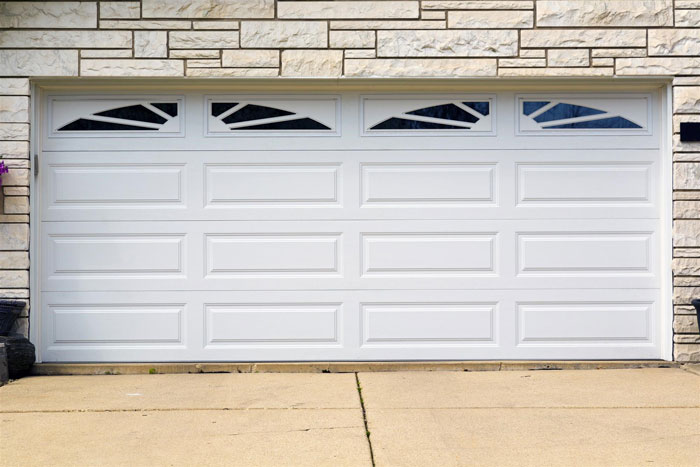
- Lifting Cables: Your door could have lifting cables, which are attached to the door’s springs and aid in opening and closing it.
- Springs: Springs are an essential part of the counterweight system used in garage doors. This system is what makes it possible to open and close the door with one hand. Springs are typically one huge coil at the top of the door. Some designs also have secondary springs located over the door tracks. Secondary springs are more common on heavier styles of doors.
- Hinges: The hinges are located in between each sectional piece of the door. They help to keep the door in place and allow each section to bend as the door is opened or closed. You can tell the quality of the door by looking at the hinges. Better-quality doors use double hinges, which better support the weight of each door section.
- Door Rollers: On the side of garage doors are small rollers or wheels. As the door is opened and closed, the wheels should turn freely inside the door tracks. If you want a quieter opening door, consider upgrading from galvanized steel to nylon door rollers.
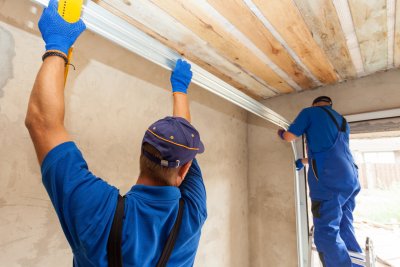
- Door Tracks: The tracks are those metal pieces attached to the sides of the doors to allow it to open and close easily. In most homes, the tracks are suspended and secured to the garage’s ceiling.
- Garage Door Opener: The opener is a motorized device attached to the garage door to automate opening and closing. The opener has its own specific parts and components, including a lifting arm, manual disconnect, and chains.
Many of the door’s components will be made from galvanized steel since it resists corrosion better than regular steel. The key thing you need to remember with steel is its gauge rating. The lower the gauge, the thicker the steel will be. For example, 12-gauge steel is thicker than 16-gauge steel. If you want superior quality, you will want to use components with a lower gauge rating.
Weather-Stripping
An important feature your door should have is weather-stripping. The stripping is what keeps rain and water from getting into the garage. It also blocks out wind when it is sealed correctly. On the bottom of the door, there should be some sort of rubberized weather-stripping to stop water from running under the door and into the garage.
You should also notice weather-stripping around the exterior of the garage door’s framing. Depending on the quality of the door and who installed it originally, there could be weather-stripping on the exterior and interior sides of the door. In addition, higher-quality sectional garage doors normally include weather-stripping in between each section.
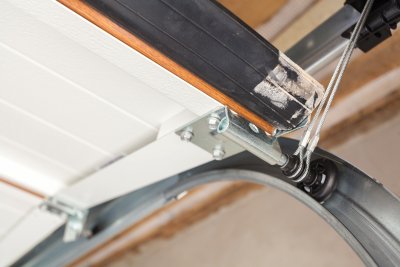
Common Garage Door Repairs
Now that you have a better understanding of garage door basics, let’s talk about some of the more common problems and repairs.
- Broken Springs: The springs on your garage door are designed to open and close the door a set number of times. Eventually, they will break, and you will know it if you are at home. When a garage door spring breaks, it makes a loud noise, almost like a firework going off in your garage.
At this point, attempting to open or close the door can be very dangerous. There can still be tension left in the spring, and it could knock the door off its tracks, as well as cause personal injuries if it snaps off.
If the spring breaks on your garage door, do not try to open it. Instead, call and schedule garage door repair service immediately. You should also stay out of your garage until after the door has been fixed.
- Broken Cables: Cables can break on their own from normal wear and tear or from the stresses placed on them when springs break. If a cable is broken, one side of the door may appear to be “sagging” compared to the other. That side of the door may also seem heavier.
You may also notice the door is slightly angled and lower on one side as it opens. If all the cables are broken, the door may not stay in place when it is opened. Instead, it will fall down as soon as you lift it up, which can be a serious safety risk.
- Sticking Rollers: The rollers on the sides of the door should spin and turn. If they are stuck and sliding, this can cause the door to come off its tracks. Stuck rollers can also make opening and closing the door noisier.
If the door has come off its tracks in either the open or closed position, leave it in place. Attempting to close or open the door could result in the cables and springs also breaking. If the door is just being noisy, you need to have the rollers replaced and the tracks cleaned. Often, stuck rollers are due to insufficient lubrication and excess humidity.
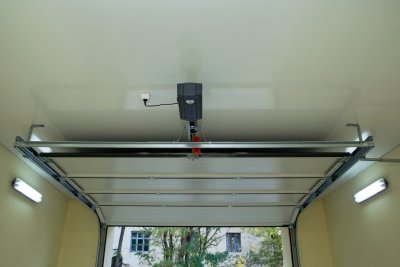
- Door Closes and Reopens: This type of problem occurs when the automatic garage door opener needs to be adjusted. Openers have door limit settings which control the open and close functions. Periodically, from normal usage, these can require slight adjustments and resynching.
Essentially, the limit settings let the door know how far it should move to be fully closed or opened. If these are off, when it touches the ground the sensors on the opener translate this as hitting an object, not the ground, so the door reopens.
Another cause for this type of problem is if something is in front of the door sensors. Toward the bottom of the door, about four to six inches off the ground will be sensors on each side of the door or on the interior wall of the garage. These sensors detect if something is in the way and will cause the door to reopen.
- The Opener Runs but the Door Doesn’t Move: Check to make sure the automatic door disconnect cord has not been pulled by attempting to open and close the door manually. If you can, then you will need to reattach the door to the automatic opener’s lift arm. Another common cause of this problem is if you have locked your garage door. Check to make sure the door is not locked.
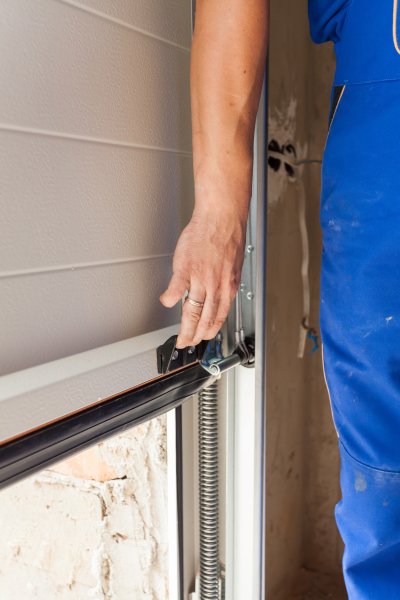
- Door Opens But Won’t Close: This problem is often related to the sensors. If the lenses get dirty, or there is something directly in front of them, they will prevent the door from closing. Clean the lenses and verify nothing is in the way of the sensors. If the door still won’t close, then it is time to call a garage door repair technician.
- The Door Sticks or Stops: A sticking door can be quite common from changes in humidity levels to a lack of proper lubrication on moving parts and components. It could also be caused if the door is no longer level and needs to be realigned.
- The Remote Opener Doesn’t Work: If the garage door opener remote is not working, see if you can open the door using the switch inside the garage. If the door opens, then it could indicate the batteries in the remote need to be replaced. After replacing the batteries, if the remote still doesn’t work, it may need to be resynched with the opener or replaced.
If the door doesn’t open and you have power, verify the opener is plugged in and the breaker has not blown. Once verifying these things, if the door isn’t working, it could mean an electrical problem or that the opener needs to be replaced.
As you can see, there can be all sorts of reasons for a broken garage door. If your garage door is not working correctly, please feel free to contact the A1A Overhead Door Company at (904) 404-2818 today! Our technicians are skilled at new garage door installations, garage door repairs, spring replacement, installing and repairing garage door openers, and more.
- A1A Overhead Door Company11
- Energy Efficiency3
- Garage Door30
- Garage Door Installation13
- Garage Door Maintenance21
- Garage Door Openers15
- Garage Door Repair20
- Garage Door Safety38
- Garage Door Spring6
- Garage Door Springs5
- Garage Door Styles14
- Garage Doors10
- Garage Organization5
- Google+ Review1
- History of Garage Doors6
- Hurricane Code6
- Infographic2
- Insulation0
- Liftmaster0
- New Garage Door10
- Overhead Doors11
- Review0
- Wounded Warrior Project1
- Yelp Review0
